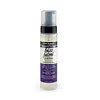What's inside
What's inside
 Key Ingredients
Key Ingredients

No key ingredients
 Benefits
Benefits

 Concerns
Concerns

 Ingredients Side-by-side
Ingredients Side-by-side

Water
Skin ConditioningCocamidopropyl Hydroxysultaine
CleansingVp/Va Copolymer
Glycereth-26
HumectantParfum
MaskingPhenoxyethanol
PreservativePolyquaternium-55
Polyquaternium-4
Panthenol
Skin ConditioningCetrimonium Chloride
AntimicrobialHydrolyzed Wheat Protein
Skin ConditioningIodopropynyl Butylcarbamate
PreservativeCaprylyl Glycol
EmollientPotassium Sorbate
PreservativeEtidronic Acid
Vitis Vinifera Seed Oil
EmollientHydrolyzed Wheat Protein Pg-Propyl Silanetriol
Skin ConditioningSimmondsia Chinensis Seed Oil
EmollientCalophyllum Inophyllum Seed Oil
AntimicrobialBenzyl Salicylate
PerfumingLinalool
PerfumingGeraniol
PerfumingCitronellol
PerfumingBenzyl Alcohol
PerfumingWater, Cocamidopropyl Hydroxysultaine, Vp/Va Copolymer, Glycereth-26, Parfum, Phenoxyethanol, Polyquaternium-55, Polyquaternium-4, Panthenol, Cetrimonium Chloride, Hydrolyzed Wheat Protein, Iodopropynyl Butylcarbamate, Caprylyl Glycol, Potassium Sorbate, Etidronic Acid, Vitis Vinifera Seed Oil, Hydrolyzed Wheat Protein Pg-Propyl Silanetriol, Simmondsia Chinensis Seed Oil, Calophyllum Inophyllum Seed Oil, Benzyl Salicylate, Linalool, Geraniol, Citronellol, Benzyl Alcohol
Water
Skin ConditioningCocamidopropyl Betaine
CleansingPolyquaternium-7
Sodium Chloride
MaskingGlycerin
HumectantRosa Damascena Flower Oil
MaskingArgania Spinosa Kernel Oil
EmollientPhenoxyethanol
PreservativeEthylhexylglycerin
Skin ConditioningPolyquaternium-10
Tetrasodium EDTA
Polysorbate 20
EmulsifyingCetrimonium Chloride
AntimicrobialParfum
MaskingLinalool
PerfumingLimonene
PerfumingCI 16035
Cosmetic ColorantIngredients Explained
These ingredients are found in both products.
Ingredients higher up in an ingredient list are typically present in a larger amount.
This ingredient is a preservative, antimicrobial, and emulsifier. It is often used in cosmetics for its ability to cleanse, condition, and reduce static.
Cetrimonium chloride is a quaternary ammonium salt, meaning it has a water-soluble structure.
Linalool is a fragrance and helps add scent to products. It's derived from common plants such as cinnamon, mint, citrus, and lavender.
Like Limonene, this ingredient oxidizes when exposed to air. Oxidized linalool can cause allergies and skin sensitivity.
This ingredient has a scent that is floral, spicy tropical, and citrus-like.
Learn more about LinaloolParfum is a catch-all term for an ingredient or more that is used to give a scent to products.
Also called "fragrance", this ingredient can be a blend of hundreds of chemicals or plant oils. This means every product with "fragrance" or "parfum" in the ingredients list is a different mixture.
For instance, Habanolide is a proprietary trade name for a specific aroma chemical. When used as a fragrance ingredient in cosmetics, most aroma chemicals fall under the broad labeling category of “FRAGRANCE” or “PARFUM” according to EU and US regulations.
The term 'parfum' or 'fragrance' is not regulated in many countries. In many cases, it is up to the brand to define this term.
For instance, many brands choose to label themselves as "fragrance-free" because they are not using synthetic fragrances. However, their products may still contain ingredients such as essential oils that are considered a fragrance by INCI standards.
One example is Calendula flower extract. Calendula is an essential oil that still imparts a scent or 'fragrance'.
Depending on the blend, the ingredients in the mixture can cause allergies and sensitivities on the skin. Some ingredients that are known EU allergens include linalool and citronellol.
Parfum can also be used to mask or cover an unpleasant scent.
The bottom line is: not all fragrances/parfum/ingredients are created equally. If you are worried about fragrances, we recommend taking a closer look at an ingredient. And of course, we always recommend speaking with a professional.
Learn more about ParfumPhenoxyethanol is a preservative that has germicide, antimicrobial, and aromatic properties. Studies show that phenoxyethanol can prevent microbial growth. By itself, it has a scent that is similar to that of a rose.
It's often used in formulations along with Caprylyl Glycol to preserve the shelf life of products.
Water. It's the most common cosmetic ingredient of all. You'll usually see it at the top of ingredient lists, meaning that it makes up the largest part of the product.
So why is it so popular? Water most often acts as a solvent - this means that it helps dissolve other ingredients into the formulation.
You'll also recognize water as that liquid we all need to stay alive. If you see this, drink a glass of water. Stay hydrated!
Learn more about Water